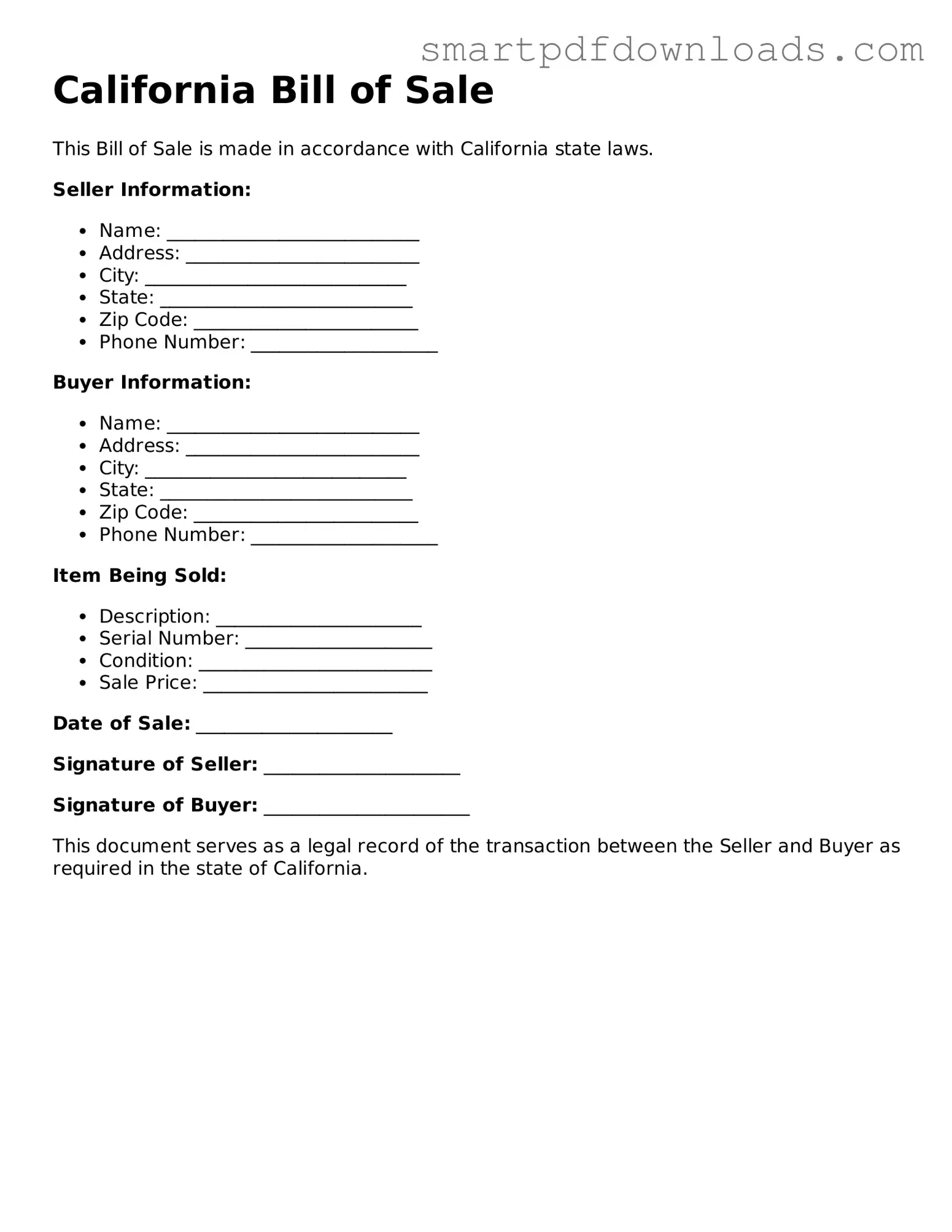Legal Bill of Sale Form for the State of California
A California Bill of Sale form is a legal document that records the transfer of ownership of personal property from one party to another. This form serves as proof of the transaction, detailing important information about the buyer, seller, and the item being sold. Understanding how to properly use this form can help ensure a smooth and lawful transfer of assets.
Edit Bill of Sale Online
